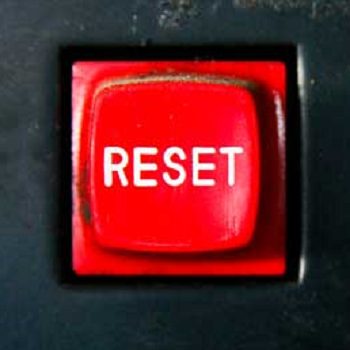QE & Stimulus to Continue Even With a Trump Win
With polling results tight in the US Presidential election, there is still concern that whatever the outcome, it will be contested, disputed, appealed, and legally challenged. The wider fear then is that such delays and disputes will create economic uncertainty, market volatility, and civil unrest for a number of weeks and perhaps for far longer.
This year’s US presidential election is perhaps the most divisive ever, and will be complicated by the use of record mail in ballots, patterns in popular versus electoral college voting, and the potential of a Supreme Court intervention. Add to this that the entire drama is taking place in a weak economic environment amid seemingly limitless injections of fiscal and monetary stimulus, and the whole thing is shaping up to be one that future historians will write about for years to come.
Not to forget the parallel House and Senate elections also happening on Election Day, whose outcomes will affect the efficiency of the next presidency both politically and economically (via the ease with which legislation can pass through Congress).
The Electoral College
A contested presidential election is not just a theoretical possibility, and has happened as recently as 20 years ago in the 2000 Bush vs Gore race. At that time, it was only after five weeks that the US Supreme Court declared George W Bush president on 12 December 2000. That election had been held on 7 November. Delays on that occasion were due to a series of vote recounts in Florida (on which Florida’s electorate votes hinged), and an outcome only emerged after the Supreme Court blocked further recounts.
Biden campaign: ‘Under no scenario’ will Donald Trump be declared a winner on Tuesday https://t.co/eYydiKoRZL
— The Washington Times (@WashTimes) November 2, 2020
While most people’s eyes glaze over at the mention of the convoluted US electoral college system, the key to remember is that the popular election vote isn’t to elect the US President, but to determine which way the electoral college electors from each state will vote on the candidates. There are 538 electoral votes up for grabs, which means a majority in the electoral college votes is 270.
Like the House or Representatives, each of the 50 US states is entitled to electoral college votes based on state population. Given that there are 435 representatives in the House of Representatives, and 2 senators per state, this gives 435 + 100 = 535. Add in 3 more electoral college votes for Washington DC and this gives 435 + 100 + 3 = 538 votes. Electors are appointed by and represent their respective parties and practically always vote to reflect the outcome of the popular vote in their state.
Supreme Court
In 2000, Gore received more of the popular vote, but lost to Bush because George W received more electoral college votes (271 votes) following the Supreme Court decision. Likewise in 2016, while Trump received less of the popular vote than H Clinton, he received more of the electoral college vote (306 votes vs 232). So the takeaway here is that you can win less votes overall in some big populous states but still receive more electoral college votes.
If there is a close (or not so close) outcome this year in the electoral college vote, then it’s possible that there may be legal actions and appeals that will involve the Supreme Court. Currently, the Supreme Court has a 6 -3 conservative majority, three of which have been appointed by Trump. This does not necessarily that there are 6 Republican judges vs 3 Democrat judges, but if the election ends up being decided by the Supreme Court, it could cause even more public protests and delays.
Turning to the Congress elections that are also running in parallel on 3 November, these are for all 435 seats in the House of Representatives (lower house) and this year are for 35 of the seats in the Senate (upper house). The Senate currently has a Republican majority of 53 to 47. The House has a large Democrat majority. With 35 Senate seats up for election, 23 of which are Republican, voter sentiment for Trump will affect how many of these seats can be retained by the Republicans. The House of Representatives will probably retain its Democrat majority.
The new (117th) term of Congress will begin on 4 January 2021, with the presidential inauguration slated for 20 January 2021 in Washington DC. Interestingly, a US Government shutdown is possible on 11 December as a recent stopgap spending bill for the federal government only covers spending up to 11 December. Add to the mix then the possibility that the US Government could shut down even before the new term of Congress.
President @realDonaldTrump has signed the Continuing Resolution, funding the government through December 11, 2020.
— Judd Deere (@JuddPDeere45) October 1, 2020
It’s the Economy, Stupid
While politically the US Presidential and Congressional election permutations are great theatre, does one outcome or another make a material difference to the US and global economy?
Plenty of articles make a case that a Trump and a Biden presidency would be very different economically due to factors such as different size fiscal stimulus packages and the relative ease with which legislation would flows through Congress based on Republican or Democrat majorities.
Tinkering around the edges, this is probably true and the stock market will react in different ways to the economic policies out of each administration. Due to Biden administration policies under the guise of Covid, a more extensive economic shutdown and the more rapid approach of a tightly controlled society would be expected. This would require higher fiscal stimulus for a bigger list of economic dependents. Trump on the other hand would push to open up the economy much more as well as much more quickly, hence less fiscal stimulus and more stock market growth potential.
However, given that the Great Financial crisis has not yet been resolved (merely delayed), and that globally there is an ongoing destruction of Western World economies under the guise of Covid and the planned in advance Great Reset, then whoever is the victor in the US presidential election will still mean continued limitless Federal Reserve quantitative easing (QE), and continued enormous US government stimulus spending.
This was succinctly summed up in a recent US election decision tree from Luke Gromen of macro research firm Forest for the Trees (FFTT), which although slightly tongue in cheek, illustrates well that when the continued life support of the US economic and financial system is at stake, it does not matter much who is in the Whitehouse or who controls Congress.
Many thanks for this US ELECTION DECISION TREE @LukeGromen
— Ronnie Stoeferle (@RonStoeferle) October 30, 2020
pic.twitter.com/dr0QOWLx1z
Conclusion
In short, whatever the presidential outcome, there will be massive US federal government stimulus, continued Fed asset purchases and debt expansion, and monetization of this government stimulus via the Fed and markets. And given the continued QE and fiscal stimulus, this also means continued destruction of the value of the US dollar relative to real assets and gold.
Add to the mix, the likely appeals, legal challenges and possible election outcome delays that will create market uncertainty and volatility as well as domestic unrest and protest, and a perfect storm appears to be developing that is gold price positive and that will support the next leg up in gold’s current bull market.
Popular Blog Posts by Ronan Manly
 How Many Silver Bars Are in the LBMA's London Vaults?
How Many Silver Bars Are in the LBMA's London Vaults?
 ECB Gold Stored in 5 Locations, Won't Disclose Gold Bar List
ECB Gold Stored in 5 Locations, Won't Disclose Gold Bar List
 German Government Escalates War On Gold
German Government Escalates War On Gold
 Polish Central Bank Airlifts 8,000 Gold Bars From London
Polish Central Bank Airlifts 8,000 Gold Bars From London
 Quantum Leap as ABN AMRO Questions Gold Price Discovery
Quantum Leap as ABN AMRO Questions Gold Price Discovery
 How Militaries Use Gold Coins as Emergency Money
How Militaries Use Gold Coins as Emergency Money
 JP Morgan's Nowak Charged With Rigging Precious Metals
JP Morgan's Nowak Charged With Rigging Precious Metals
 Hungary Announces 10-Fold Jump in Gold Reserves
Hungary Announces 10-Fold Jump in Gold Reserves
 Planned in Advance by Central Banks: a 2020 System Reset
Planned in Advance by Central Banks: a 2020 System Reset
 Surging Silver Demand to Intensify Structural Deficit
Surging Silver Demand to Intensify Structural Deficit





 Ronan Manly
Ronan Manly 0 Comments
0 Comments










